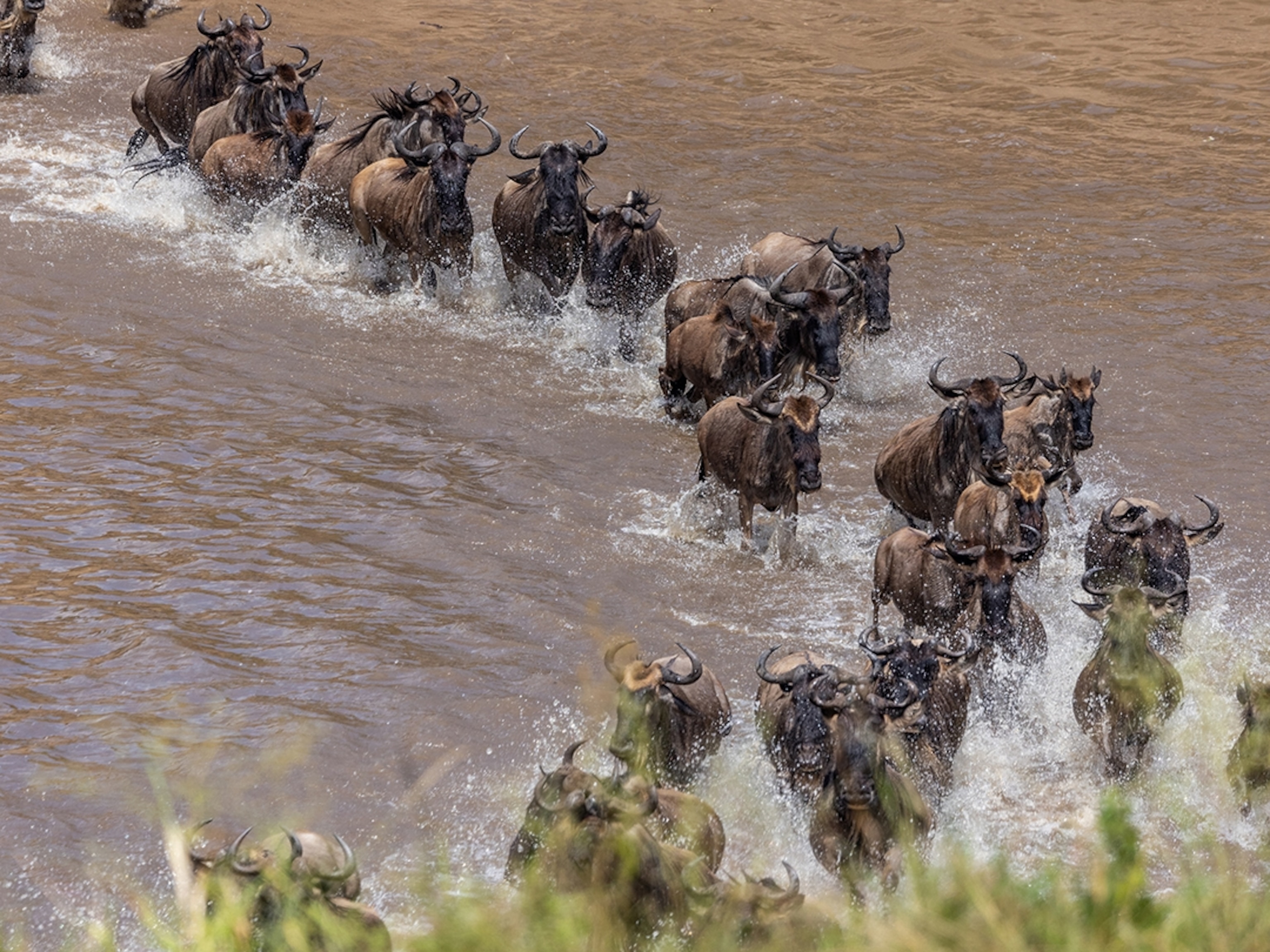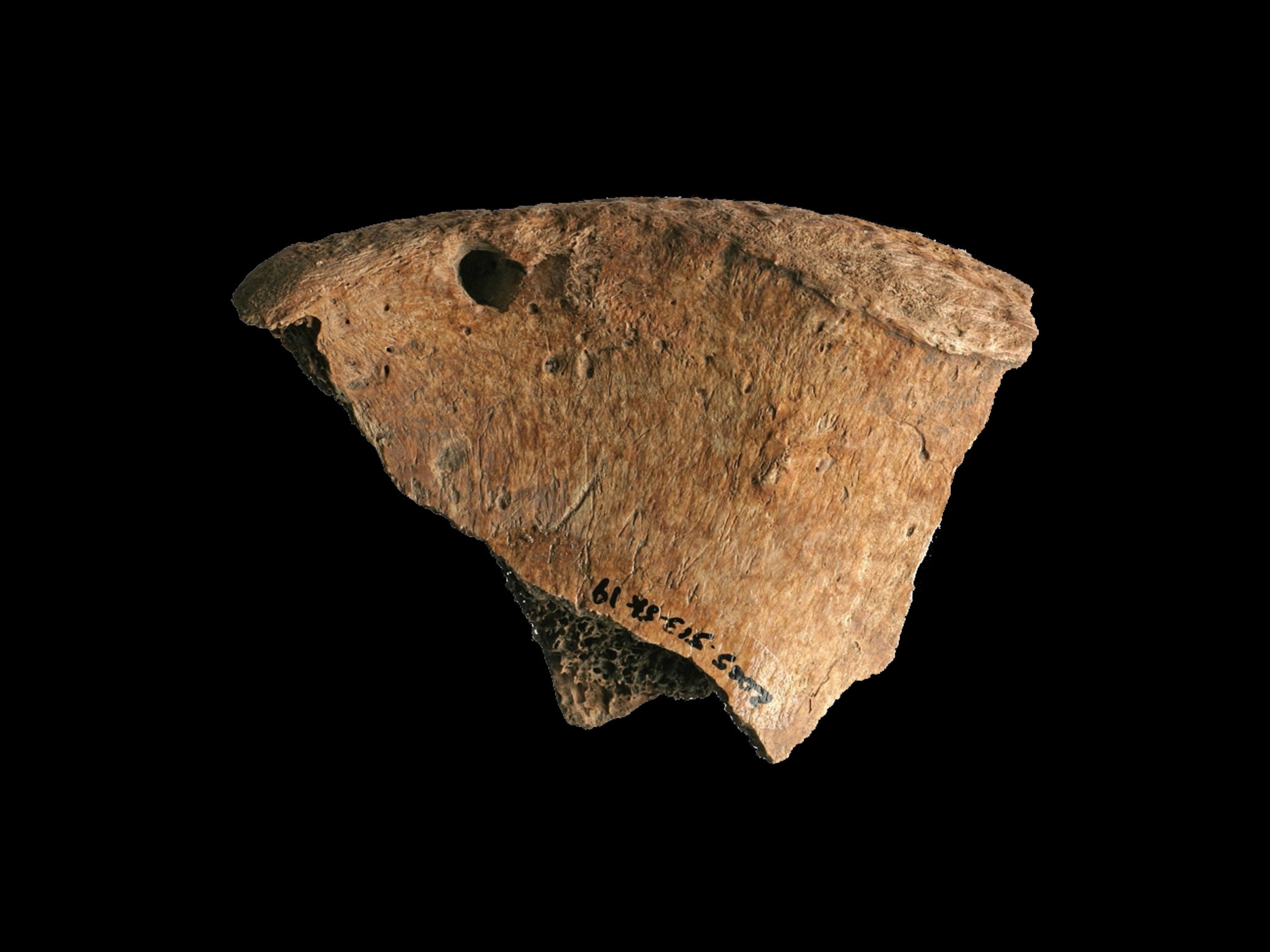'Battle' Between a Lion and Hyenas Isn't What it Seems
An apparent conflict between a lion and hyenas shows more than meets the eye.
Lions and hyenas: relentless enemies on the African landscape. Or so stereotypes would have us believe.
A video taken May 2016 at Maasai Mara, Kenya opens with a male lion gnawing on the bones of its unlucky prey, before cutting to a group of hyenas swooping in and swiping the scraps. After they fight amongst themselves over their find, the lion leaps back onto the scene, scattering them.
The video’s caption describes the hyenas as “trying to steal the lion’s food. In the first attempt, the lion gives chase, forcing them to abandon the carcass. They later return and manage to carry it away without being caught.”
But though it may seem that the hyenas are grabbing the bones out from under the lion’s nose, it’s actually a case of typical leftover scavenging, according to conservation biologist Luke Dollar, who heads National Geographic’s Big Cats Initiative.
Dollar says that what we’re watching isn’t a conflict at all—at least not between the lion and hyenas.
Watch closely around 18 seconds: when the hyenas grab the scraps, a black-backed jackal pops his head up from where he’s been enjoying the meal for himself. When the hyenas take the kill for themselves, they’re actually swiping it from the jackal, not the lion—who isn’t visible in the frame when the black-backed jackal appears, meaning that he has already finished eating and wandered off.
“There’s no way that black-backed jackal would have been on that scrap if the lion still wanted it,” Dollar says. “These little jackals aren’t going to eat anything near a lion, which would crush them in one fell swoop of a paw.”
The hyenas then begin bickering among themselves, tumbling backwards into the water. But when the lion sprints back, it isn’t scaring them away to reclaim its meal. The hyenas’ noise “piques the lion’s interest,” making it wonder if it might have left good food behind. Once the lion returns, however, it has “more interest in the water than seeing that scrap that he’s already left.”
“We don’t see a lot of direct conflict here,” Dollar emphasizes. “It’s fully recognized that this lion, whatever he wants to claim ownership from, he gets. We don’t see the hyenas take it from the lion. We see the hyenas take it from a black-backed jackal.”
The lion has already eaten the nutrient-rich organs, like the liver and heart. What’s left is nothing notable for the lion, but perfect for the jaw musculature of hyenas, which is even stronger than that of lions. Additionally, hyenas have thick, robust teeth, perfect for crushing the bones that lions leave behind.
But seeing the hyenas benefit from the lion's hunt shouldn’t give the impression that hyenas and lions have a commensal relationship.
“I don’t think that anyone is going to make the mistake of thinking that they’re cooperative species,” Dollar says. “Hyena are big, lions are big, they’re in competition for food sources on the landscape, there’s no question. But what we’re seeing in this video—the lion’s done. He’s eaten.”
The final takeaway?




